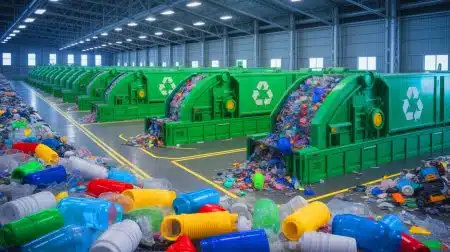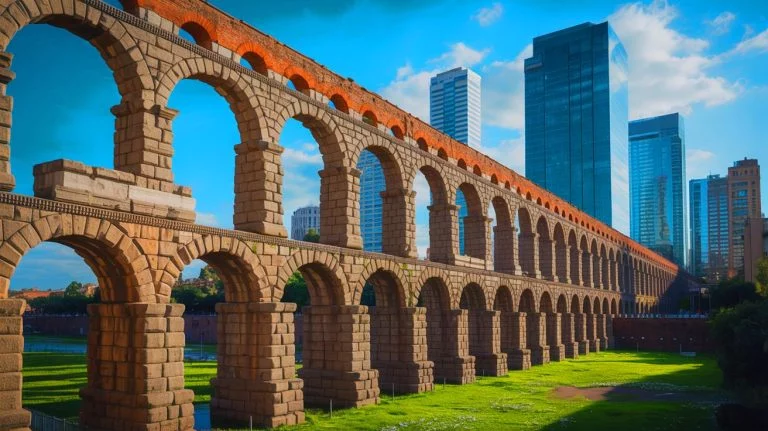| IN A NUTSHELL |
|
Construction is a cornerstone of modern civilization, yet it is also a significant contributor to global carbon emissions. As the world grapples with climate change, the quest for more sustainable building materials is essential. A new study suggests that the ancient Romans might have unwittingly provided a solution. Researchers are now looking at the longevity of Roman concrete, which has stood the test of time, as a potential model for future construction materials. Could the ancient techniques offer a way to reduce the carbon footprint of the construction industry? This article delves into the potential of Roman concrete to build a more sustainable future.
Roman Concrete Might Make a Comeback
Recent studies have sparked interest in the potential revival of Roman concrete. Known for its durability, Roman concrete was used in structures like aqueducts and bridges, many of which have survived for millennia. In contrast, modern buildings often require frequent maintenance and have a shorter lifespan. This discrepancy raises the question: could ancient building techniques offer a greener alternative for today’s construction challenges?
The environmental impact of contemporary construction is undeniable. According to a recent report, modern concrete production is responsible for about 8% of global CO2 emissions. This has driven researchers to explore alternative methods that might reduce this footprint. The durability of Roman concrete could mean fewer repairs and replacements, thus potentially reducing resource consumption over time.
However, the path to implementing these ancient techniques in modern construction is not straightforward. While the Roman methods are intriguing, they must be adapted to contemporary standards and environmental conditions. This process involves not just copying ancient recipes but also innovating upon them to fit today’s ecological and structural demands.
Modern Concrete vs. Roman Concrete
The comparison between modern and Roman concrete reveals some intriguing insights. Modern concrete is primarily composed of sand, gravel, and limestone, whereas Roman concrete incorporated locally sourced volcanic materials and recycled rubble. This composition contributed to its durability but surprisingly did not significantly reduce carbon emissions compared to modern concrete.
One key finding of the research is that while Roman concrete may not dramatically lower carbon emissions, it does reduce other pollutants. The production of Roman concrete has been found to lower emissions of nitrogen and sulfur oxides by a substantial margin. This could have significant environmental benefits if such methods were to be adapted for modern use.
The potential for Roman concrete to reduce maintenance needs is another crucial factor. Less frequent repairs could lead to a decrease in the energy and resources expended over a structure’s lifetime. Thus, while the initial carbon footprint might be similar, the long-term sustainability benefits could be substantial.
Innovation Also Looks Back
One of the most fascinating aspects of Roman concrete is its ability to withstand the test of time without the steel reinforcement that modern concrete requires. Steel is often used in contemporary construction to enhance strength, but it is also prone to corrosion, which can lead to structural failure. Roman concrete did not have this vulnerability, which contributed to its longevity.
Researchers like Paulo Monteiro from the University of California, Berkeley, emphasize the importance of carefully comparing these two materials. While Roman concrete might not replace modern materials entirely, incorporating its strengths could lead to innovative solutions. The ancient methods provide a different perspective on durability and sustainability that is often overlooked in today’s rapid-paced construction industry.
The challenge lies in understanding how these ancient strategies can be melded with modern technologies. This fusion of old and new could pave the way for more sustainable building practices that meet today’s environmental and structural needs.
Future Prospects for Sustainable Construction
The research into Roman concrete opens the door for discussions on sustainable construction methods. While the findings suggest that simply adopting Roman techniques might not drastically reduce emissions, the lessons learned are invaluable. The durability and reduced maintenance needs of Roman concrete present a compelling case for further exploration.
As researchers continue to investigate these ancient methods, there is potential for significant advancements in sustainable construction. Future studies will need to focus on how these techniques can be adapted and improved upon to meet modern environmental standards. The goal is not just to replicate the past but to innovate upon it, creating a built environment that is both sustainable and resilient.
The question now is how the construction industry will integrate these insights into practical, scalable solutions. As we strive for a more sustainable future, could the wisdom of the ancients guide us toward more environmentally friendly construction practices?
Did you like it? 4.5/5 (23)






Wow, Roman concrete still standing strong after all these years! Maybe we should take notes. 🏛️
Is it really feasible to integrate ancient techniques with today’s building standards?
Why didn’t we think of this earlier? 🤔
This is fascinating! Could Roman concrete actually help lower construction costs in the long run?
So, does this mean modern concrete is just a cheap knock-off? 😂
Can someone explain how Roman concrete reduces other pollutants?
Interesting read, but how do we ensure these ancient methods meet current safety standards?
Love this exploration of ancient techniques! Thank you for sharing.
Roman concrete might lower maintenance needs, but how about the initial cost?
I’m skeptical. How reliable are these studies on Roman concrete?
Why isn’t this being talked about more in the construction industry?